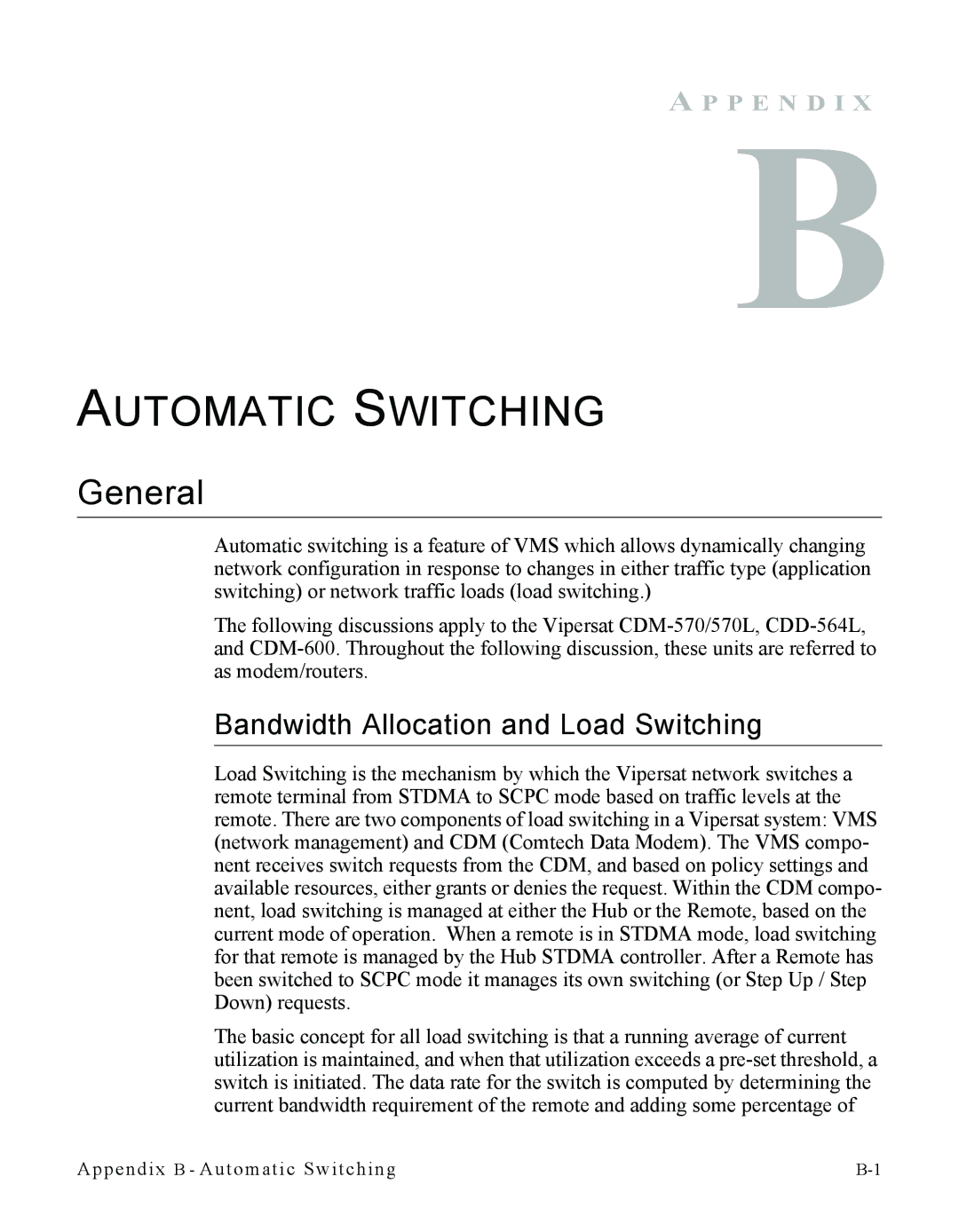
A P P E N D I X
AUTOMATIC SWITCHING
General
Automatic switching is a feature of VMS which allows dynamically changing network configuration in response to changes in either traffic type (application switching) or network traffic loads (load switching.)
The following discussions apply to the Vipersat
Bandwidth Allocation and Load Switching
Load Switching is the mechanism by which the Vipersat network switches a remote terminal from STDMA to SCPC mode based on traffic levels at the remote. There are two components of load switching in a Vipersat system: VMS (network management) and CDM (Comtech Data Modem). The VMS compo- nent receives switch requests from the CDM, and based on policy settings and available resources, either grants or denies the request. Within the CDM compo- nent, load switching is managed at either the Hub or the Remote, based on the current mode of operation. When a remote is in STDMA mode, load switching for that remote is managed by the Hub STDMA controller. After a Remote has been switched to SCPC mode it manages its own switching (or Step Up / Step Down) requests.
The basic concept for all load switching is that a running average of current utilization is maintained, and when that utilization exceeds a
Appendix B - Automatic Switching |
